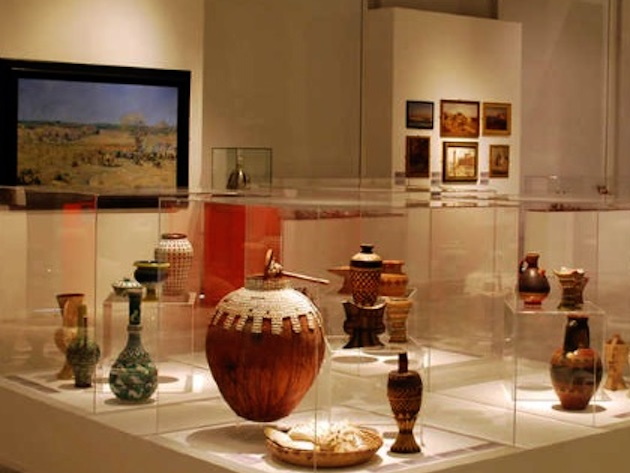
Rome is a city rich in oriental art, monuments and museums; among these the most famous monument is the Pyramid Cestia of the praetor and tribune of the plebs Gaius Cestius. Fruit of the Egyptianizing fashion that developed in the capital of the ancient world after the conquest of Egypt by Octavian in 31 BC, the tomb was built along the Via Ostiense between 18 and 12 BC. Four centuries later, on the initiative of the emperor Aurelian, it was incorporated into the new city walls.
Among the oriental art museums, first of all we mention the Giuseppe Tucci Museum of Oriental Art, which is part of the MuCiv - Museo delle Civiltà (Civilizations Museum). The museum, named after Giuseppe Tucci (1894-1984), one of the greatest orientalists of the twentieth century, has been transferred from the historic site of Palazzo Brancaccio in Via Merulana to the Eur in the Palazzo delle Scienze. The collection was formed with state purchases, exchanges, donations and with artifacts and art objects brought back by the archaeological missions of ISMEO (Italian Institute for the Middle and Far East), today IsIAO, (Italian Institute for Africa and the Orient), in Iran, Afghanistan, Pakistan. The permanent exhibition is divided into the sections: Ancient Near and Middle East, India, Gandhara, Tibet - materials among the most important in the world - and Nepal, South-Eastern Asia and the Far East.
Another important museum is the Barracco, made up of a wonderful collection of ancient sculptures - Assyrian, Egyptian, Cypriot, Phoenician, Etruscan and Greco-Roman art - which Giovanni Barracco, a rich Calabrian gentleman, donated to the Municipality of Rome in 1904. Above all the art of the Ancient Near and Middle East is widely documented: Egyptian art is represented starting from the most ancient dynasties (3,000 BC) up to the Roman era. From Mesopotamia instead come the precious Assyrian slabs, wall ornament of the palaces of Ashurbanipal in Nineveh and Senacherib in Nirmud, from the 7th and 6th centuries BC. Finally, the art of the Roman provinces of the East is present with three slabs from Palmyra, the famous Syrian caravan city which had its maximum splendor in the second century. AC.
Among other lesser known museums concerning ancient oriental art we point out the Museum of the Near East, Egypt and Mesopotamia which is part of the Museum Complex of the La Sapienza University, created as evidence of the results obtained in the field by more than thirty archaeological missions of the Sapienza in fifteen different countries of the Near East, the Mediterranean and Africa during more than fifty years and which has over four thousand archaeological finds.
Finally, we recall the Academy of Egypt which houses "The Mysterious discovery of the Tomb of Tutankhamun", a spectacular permanent exhibition with exact 1:1 scale replicas of the archaeological finds as they were found by Howard Carter in 1922.
Photo: courtesy of Giuseppe Tucci Museum of Oriental Art official site
 Condividi
Condividi
To find out about all accessibility services, visit the Rome accessible section.











































